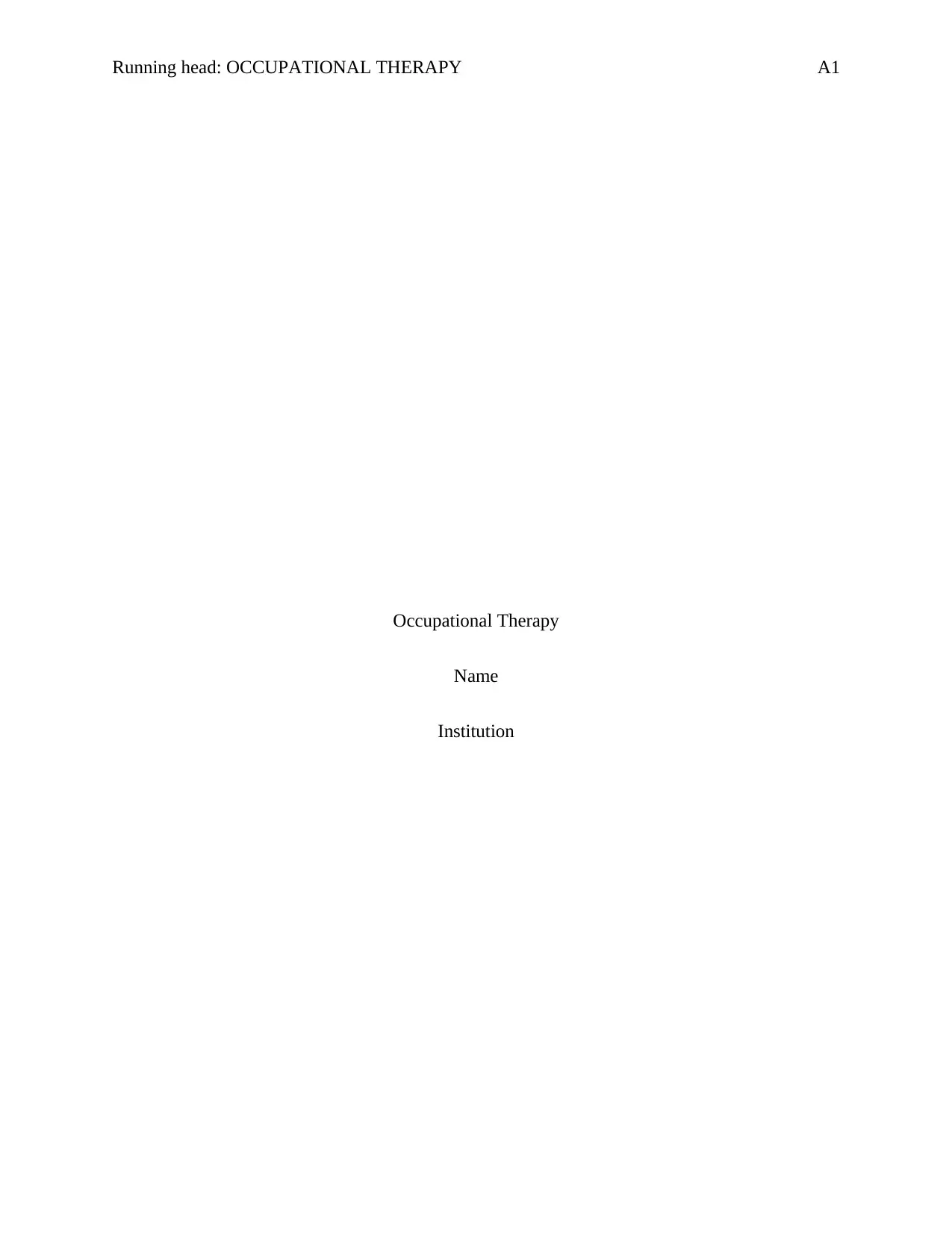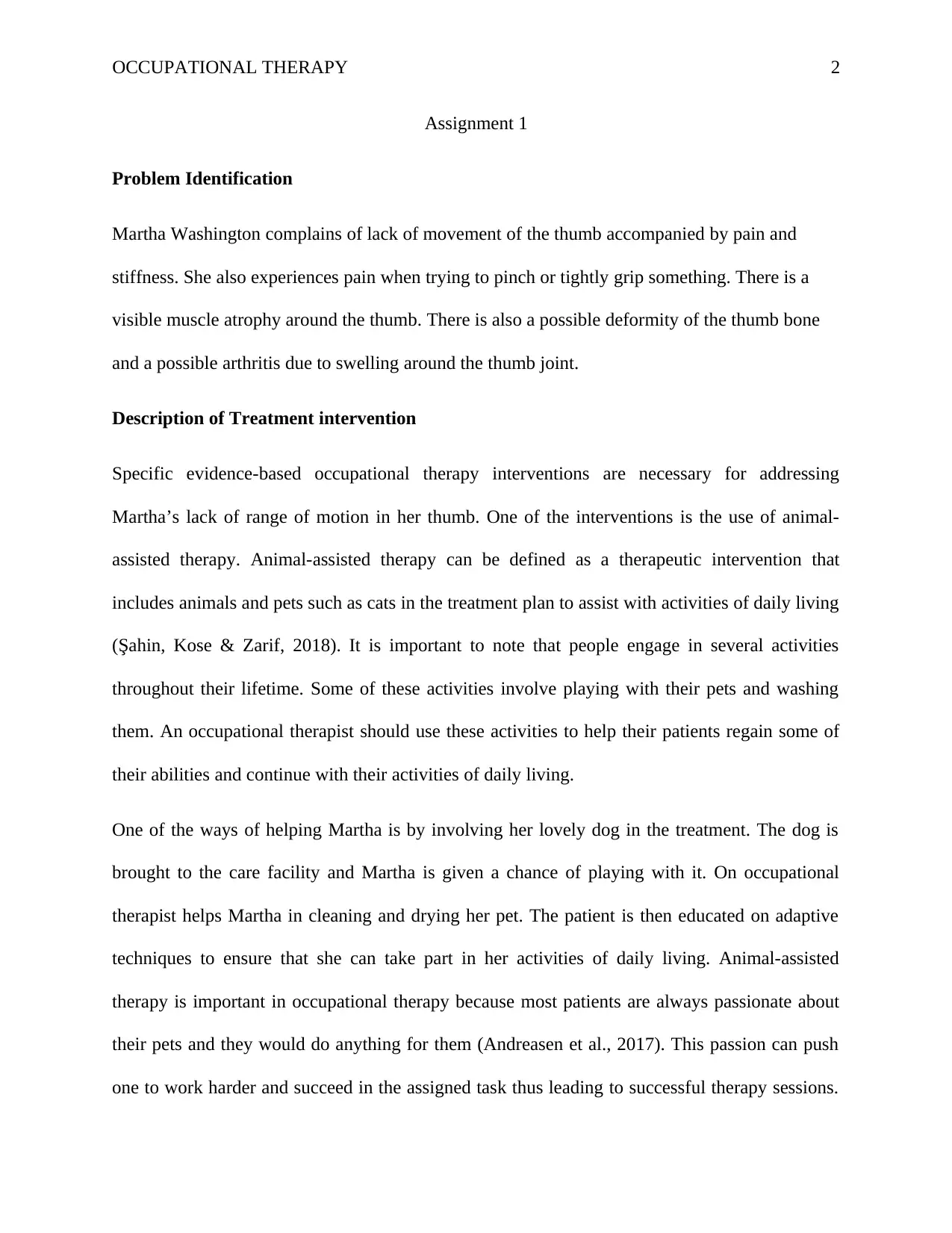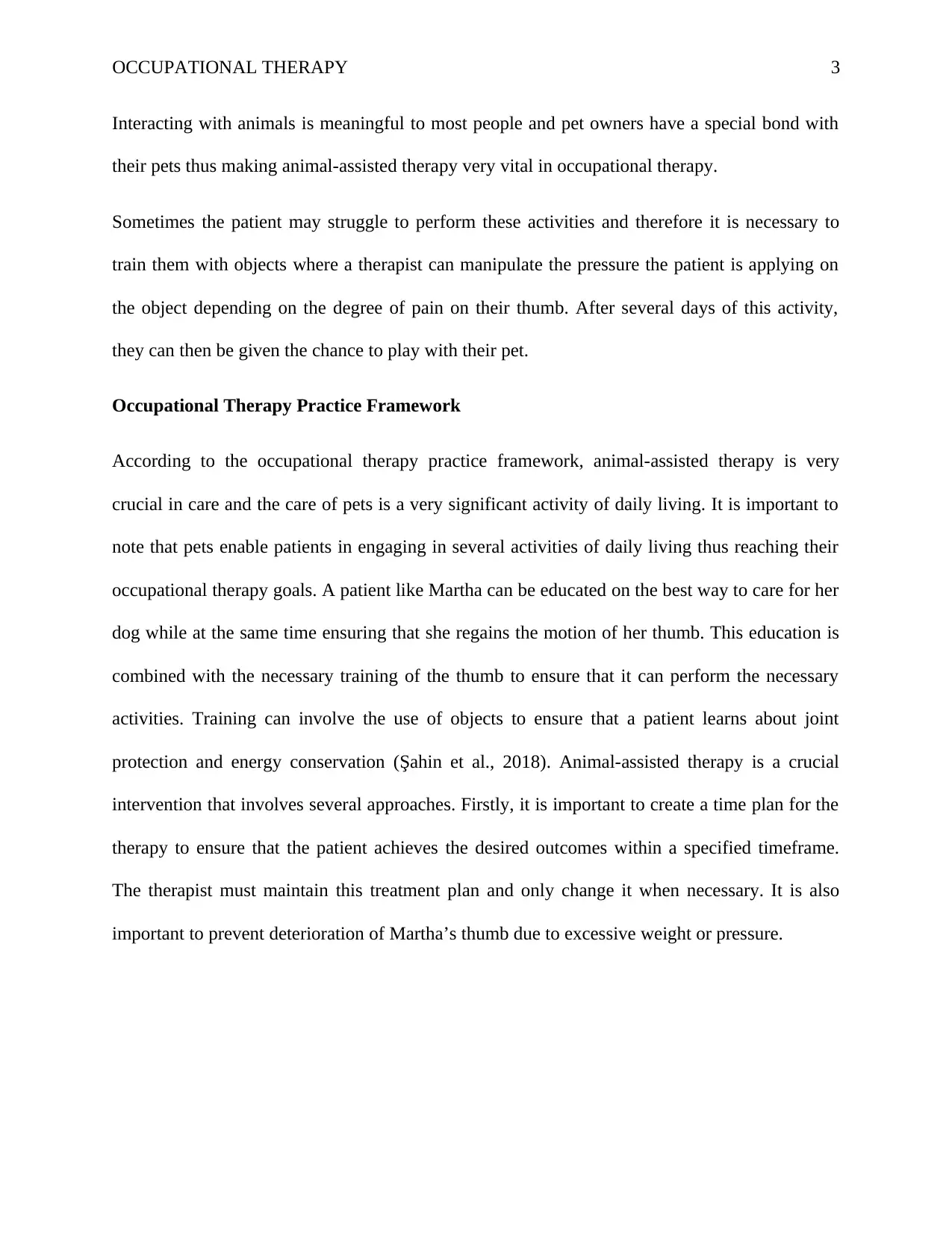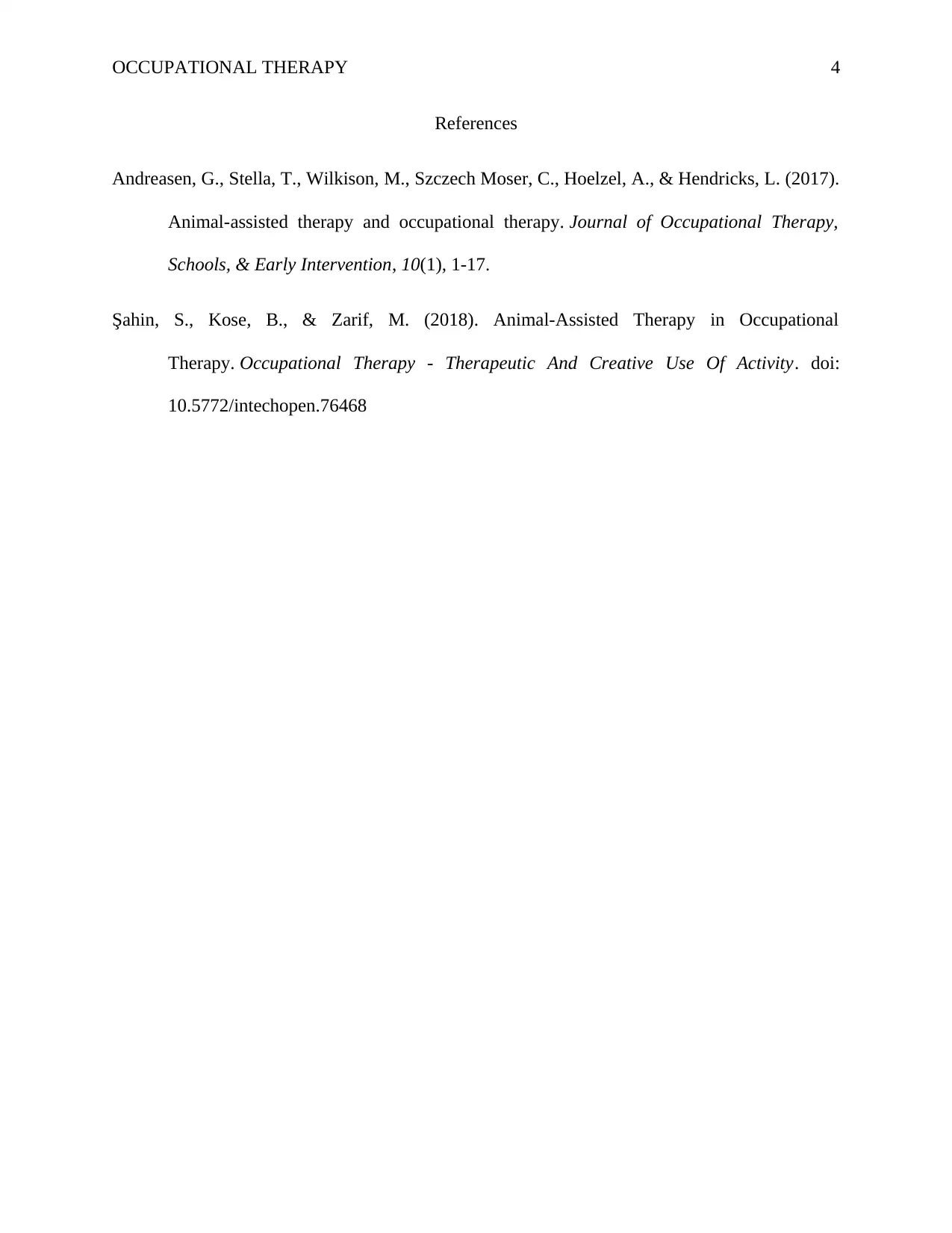Occupational Therapy Intervention Plan for Thumb CMC OA/DJD Case Study
VerifiedAdded on 2022/08/13
|4
|714
|19
Project
AI Summary
This assignment outlines an occupational therapy intervention for Martha Washington, a patient experiencing thumb pain and stiffness due to CMC osteoarthritis. The intervention focuses on animal-assisted therapy, specifically involving the patient's dog to facilitate activities of daily living and promote thumb range of motion. The treatment plan includes incorporating the dog into activities like cleaning and playing, alongside adaptive techniques and object manipulation to manage pain and pressure. The Occupational Therapy Practice Framework is applied, emphasizing the importance of pet care as a significant activity, with the aim of helping Martha regain thumb function through graded activities and joint protection techniques. The assignment also addresses the grading of the activity to allow for progression as the patient improves, and how to manage if the activity exceeds the patient's ability. References from relevant research and practical experiences are included to support the intervention's best practices.
1 out of 4











![[object Object]](/_next/static/media/star-bottom.7253800d.svg)